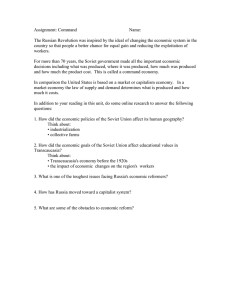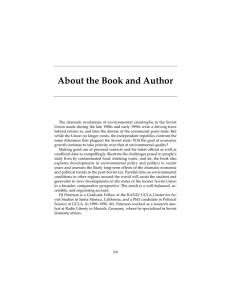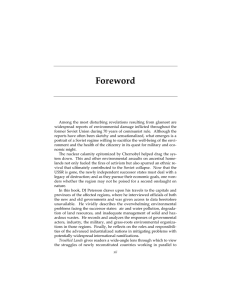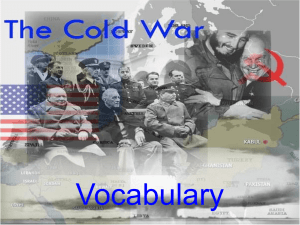Paul R Gregory, Restructuring the Soviet Economic Bureaucracy. Soviet Interview
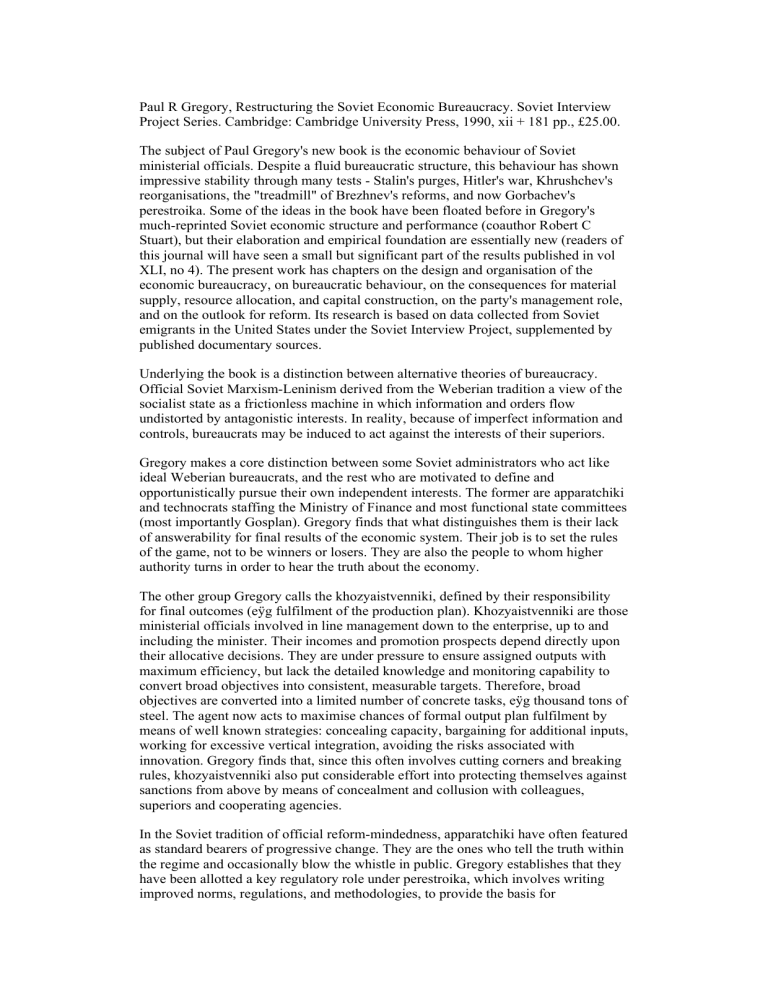
Paul R Gregory, Restructuring the Soviet Economic Bureaucracy. Soviet Interview
Project Series. Cambridge: Cambridge University Press, 1990, xii + 181 pp., £25.00.
The subject of Paul Gregory's new book is the economic behaviour of Soviet ministerial officials. Despite a fluid bureaucratic structure, this behaviour has shown impressive stability through many tests - Stalin's purges, Hitler's war, Khrushchev's reorganisations, the "treadmill" of Brezhnev's reforms, and now Gorbachev's perestroika. Some of the ideas in the book have been floated before in Gregory's much-reprinted Soviet economic structure and performance (coauthor Robert C
Stuart), but their elaboration and empirical foundation are essentially new (readers of this journal will have seen a small but significant part of the results published in vol
XLI, no 4). The present work has chapters on the design and organisation of the economic bureaucracy, on bureaucratic behaviour, on the consequences for material supply, resource allocation, and capital construction, on the party's management role, and on the outlook for reform. Its research is based on data collected from Soviet emigrants in the United States under the Soviet Interview Project, supplemented by published documentary sources.
Underlying the book is a distinction between alternative theories of bureaucracy.
Official Soviet Marxism-Leninism derived from the Weberian tradition a view of the socialist state as a frictionless machine in which information and orders flow undistorted by antagonistic interests. In reality, because of imperfect information and controls, bureaucrats may be induced to act against the interests of their superiors.
Gregory makes a core distinction between some Soviet administrators who act like ideal Weberian bureaucrats, and the rest who are motivated to define and opportunistically pursue their own independent interests. The former are apparatchiki and technocrats staffing the Ministry of Finance and most functional state committees
(most importantly Gosplan). Gregory finds that what distinguishes them is their lack of answerability for final results of the economic system. Their job is to set the rules of the game, not to be winners or losers. They are also the people to whom higher authority turns in order to hear the truth about the economy.
The other group Gregory calls the khozyaistvenniki, defined by their responsibility for final outcomes (eÿg fulfilment of the production plan). Khozyaistvenniki are those ministerial officials involved in line management down to the enterprise, up to and including the minister. Their incomes and promotion prospects depend directly upon their allocative decisions. They are under pressure to ensure assigned outputs with maximum efficiency, but lack the detailed knowledge and monitoring capability to convert broad objectives into consistent, measurable targets. Therefore, broad objectives are converted into a limited number of concrete tasks, eÿg thousand tons of steel. The agent now acts to maximise chances of formal output plan fulfilment by means of well known strategies: concealing capacity, bargaining for additional inputs, working for excessive vertical integration, avoiding the risks associated with innovation. Gregory finds that, since this often involves cutting corners and breaking rules, khozyaistvenniki also put considerable effort into protecting themselves against sanctions from above by means of concealment and collusion with colleagues, superiors and cooperating agencies.
In the Soviet tradition of official reform-mindedness, apparatchiki have often featured as standard bearers of progressive change. They are the ones who tell the truth within the regime and occasionally blow the whistle in public. Gregory establishes that they have been allotted a key regulatory role under perestroika, which involves writing improved norms, regulations, and methodologies, to provide the basis for
decentralised plant decisions. The same tradition has portrayed ministerial khozyaistvenniki as petty dictators burdening the productive sphere and encroaching on autonomous plant enterprise. Again, pro-perestroika politicians have deliberately targetted them as enemies of progress.
Gregory offers a reversal of this conventional wisdom - khozyaistvenniki are the
Soviet risk bearers, the entrepreneurs, the only ones who know how to get things done. In contrast, Soviet apparatchiki make up a superfluous stratum which derives its raison d'etre solely from the bureaucratic system's self-generated need for nonmarket regulation, and which has no direct interest in results; in a market economy the apparatchiki would wither along with the apparatus. Yet it is to this latter group that perestroika offers the leading role.
Gregory's methodology conceals some of his philosophical premisses. Most significant is his implicit belief that there is no such thing as a good regulatory agency; unfettered markets for goods and services will typically suffice to bring the economy to an optimum, without any need for external regulators. Therefore, he does not consider whether there are any regulatory roles which would be required to help even a relatively highly marketised Soviet economy to an optimum.
His account of Soviet bureaucratic behaviour leads Gregory to a depressing assessment of the self-limiting character of the state-socialist economic reform process. At the present his view seems all too realistic. The intellectual pessimism of this tightly structured, crisply argued work seems highly appropriate to the moment of its publication. It deserves to be read widely.
University of Warwick MARK HARRISON


